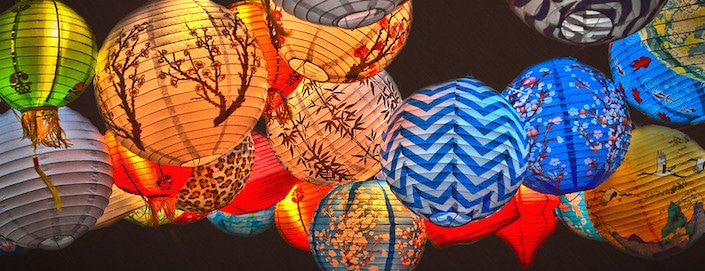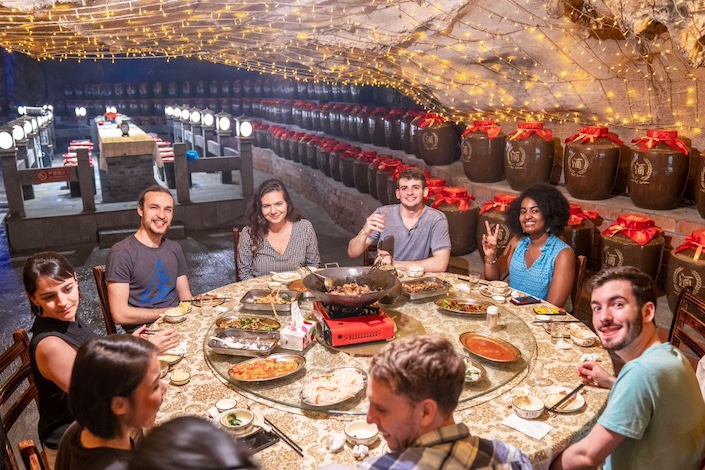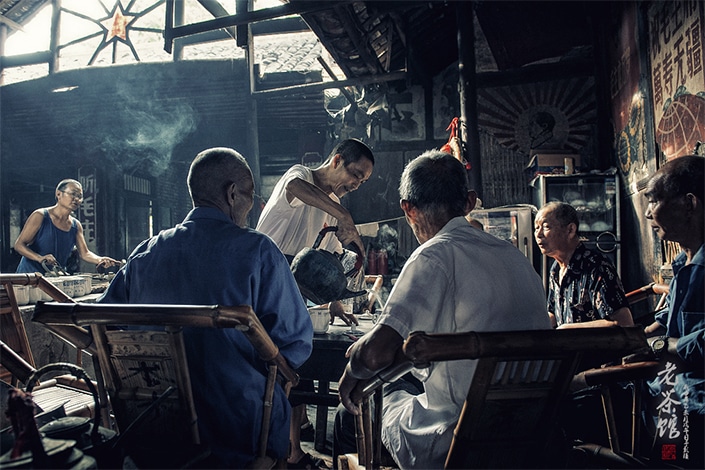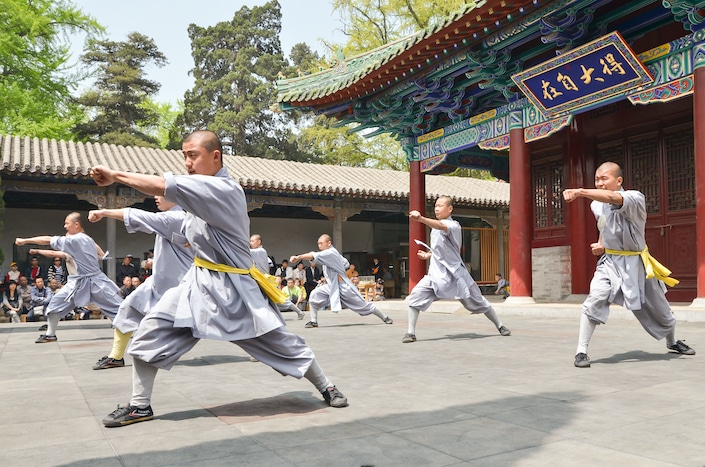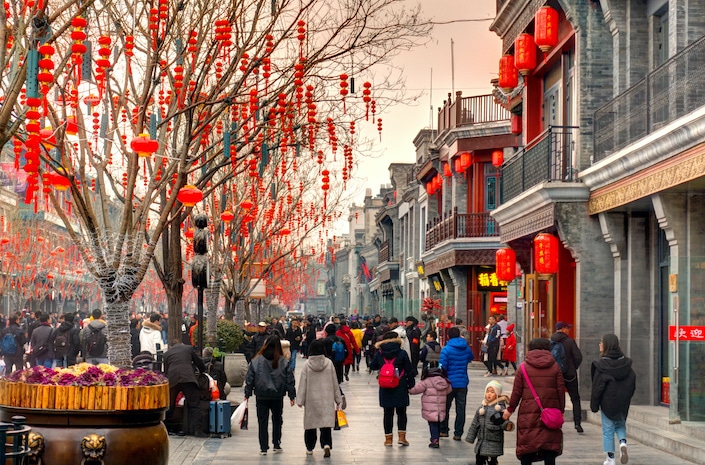Chinese Lanterns: Their History and Modern Uses
Learn Chinese in China or on Zoom and gain fluency in Chinese!
Join CLI and learn Chinese with your personal team of Mandarin teachers online or in person at the CLI Center in Guilin, China.
Like so many Chinese traditions, Chinese lanterns have a long history dating back thousands of years.
Over the centuries, lanterns have become a staple Chinese item, particularly in times of celebration. Different types of Chinese lanterns exist for many occasions, and each type has a unique meaning.
Table of Contents
What is the history of Chinese lanterns?
Han dynasty roots
Chinese lanterns have a long history and there are even records of the existence of paper Chinese lanterns dating back to as early as the Eastern Han dynasty (25 to 220 AD).
The people of that time created frames for candles using bamboo, wood or wheat-straw, stretching silk or paper over it to allow for a hot air balloon effect. These silk or paper covers would be decorated with different traditional Chinese characters, sometimes even advertising nearby businesses.
As these lanterns caught on in Chinese culture at the time, monks adopted them to celebrate the Buddha. They adopted lanterns as part of their rituals of worship on the twelfth day of the first month of the lunar calendar.
One very devout emperor requested his subjects to follow this practice and people started lighting lanterns to honor the Buddha. As part of the ritual, believers would carry the lanterns to the palace in Luoyang.

Chinese lanterns date all the way back to the Eastern Han dynasty, and maybe even before.
The Tang dynasty to modern-day China
Over the centuries, this small practice grew to become a big celebration throughout China. It gained further popularity during the Tang dynasty (618 to 907 AD), when citizens released lanterns into the sky to celebrate the country’s strength during this period.
These were peaceful and prosperous times, and the Chinese sent lanterns to the skies to celebrate all the blessings they had received. From then on, lighting lanterns and launching them into the sky became a common practice.
In modern-day China, the Lantern Festival continues to be celebrated on the 15th day of the Chinese calendar, which marks the end of the Chinese New Year celebrations. It's a time for celebration with loved ones during which families gather to light and admire lanterns.
Cities all over Mainland China are decorated in large and beautiful lanterns with various shapes. Lantern owners write riddles on them. Solving these riddles is one of the most popular activities during the Lantern Festival!

During the Lantern Festival, Chinese lanterns are decorated with riddles waiting to be solved.
What do Chinese lanterns represent?
Each of the various types of Chinese lanterns comes with its own set of meanings, but generally speaking, all of the lanterns signify a wish for a better and brighter future.
The meanings and superstitions behind colors are very important in China, so the intended message of any given Chinese lantern can vary depending on its color.
Red lanterns
In China, red represents wealth, fame, and prosperity, which is why festivals, weddings, and other celebrations often have a lot of red decorations and outfits. Most Chinese lanterns are red, and lanterns of this color symbolize a prosperous business and a thriving life.
Red lanterns are very popular during the year’s most important festivals, most notably the Chinese New Year and Lantern Festival. Abroad, these lanterns have become synonymous with Chinese businesses, and many Chinatowns and Chinese-owned shops and restaurants keep them hanging all year long.

Red is considered an auspicious color in Chinese culture.
Yellow lanterns
Another color that is sometimes used to make lanterns is yellow, which is often associated with good luck and neutrality. This was the emperor’s color during imperial times, and it’s still associated with the five major emperors of ancient China.
Yellow also represents freedom from worldly concerns, and as such, it is heavily used in Buddhism. Yellow lanterns are often released by young people and students, as they’re said to bring good luck in school.

Yellow lanterns are thought to bring good luck for students.
Green lanterns
Green is also a relatively popular color for Chinese lanterns. In Chinese symbology, green is associated with health, prosperity, and harmony. As such, lanterns of this color can be released to attract growth.

The color green is associated with health and prosperity in Chinese culture.
Different shapes and sizes
Besides color, the shape of the lantern is another factor to be taken into consideration.
Nowadays, you can even find geometric figures and even Chinese zodiac signs, though most traditional lanterns are round.
Their circular shape symbolizes wholeness and togetherness and is reminiscent of the full moon, which is an important part of both the Lantern Festival and the Mid-Autumn Festival — two holidays which make ample use of lanterns during their celebrations.
The decoration and art featured on lanterns can also have different meanings. Often, decorative writings are used on lanterns that convey best wishes for a long and healthy life and a wealthy future.
Chinese Dragon designs represent strength, flowers and butterflies represent happiness, bamboo designs represent resilience, and plants signify growth.
What are the three main types of Chinese lanterns?
Traditionally, there were three major types of Chinese lanterns: hanging, flying, and floating. In recent times, a new type of lantern has become increasingly popular: giant, colorful lanterns representing various motifs.
Hanging lanterns
Hanging lanterns are the most common, and you’ll find them used as decorations in Chinese restaurants and businesses around the world. In China, you’ll find Chinese lanterns hanging in public spaces, shops, restaurants, and even used as street lights.
Hanging lanterns are particularly common during festivals as they are said to bring good luck. During the Spring Festival, red lanterns are meant to scare the Nian monster away.
Red lanterns grace countless venues from the beginning of Spring Festival to its conclusion 15 days later on the Lantern Festival.

Hanging Chinese lanterns outside one's home is a popular activity during Spring Festival.
Flying lanterns
Flying lanterns, which are propelled by hot air generated by a little flame inside, are like miniature hot air balloons. These are only released at night during special occasions like the Mid-Autumn Festival.
Usually, flyinh Chinese lanterns are released in large quantities, creating a mesmerizing effect.

Flying Chinese lanterns are beautiful, but they can also be a fire hazard.
Floating lanterns
A third type, known as floating lanterns, are also used during large-scale events, most notably the Dragon Boat Festival. They function in the same way as flying lanterns, but they have varying shapes, including lotus flowers and hearts.
The effect of floating lanterns is quite unique, especially since they’re usually released over bodies of water.
When the light from the lanterns reflects on the water, an optical illusion is created and it seems as though the lanterns are floating in the water as well as in the sky. It’s one of the most visually impressive spectacles one can witness in China.

Some lanterns are designed to float on water.
How are Chinese lanterns used during festivals?
As festivals across Mainland China have grown, so have its lanterns. Nowadays, lantern festivals are filled with huge and multi-colored lanterns shaped as animals and plants.
These giant structures can showcase traditional animals in Chinese culture, such as Chinese dragons, or other images from nature and popular culture.
Large lanterns with various shapes are similar to statues, in that they remain in the same place throughout the duration of the festival.

During the Lantern Festival, it's common to see elaborate lanterns in the shape of dragons and other creatures.
The CLI team is comprised of China experts with advanced degrees in China studies, teaching Chinese as a foreign language, education, and other related disciplines. Founded in 2009, CLI is a center for Chinese language and cultural studies based in scenic Guilin, China.


